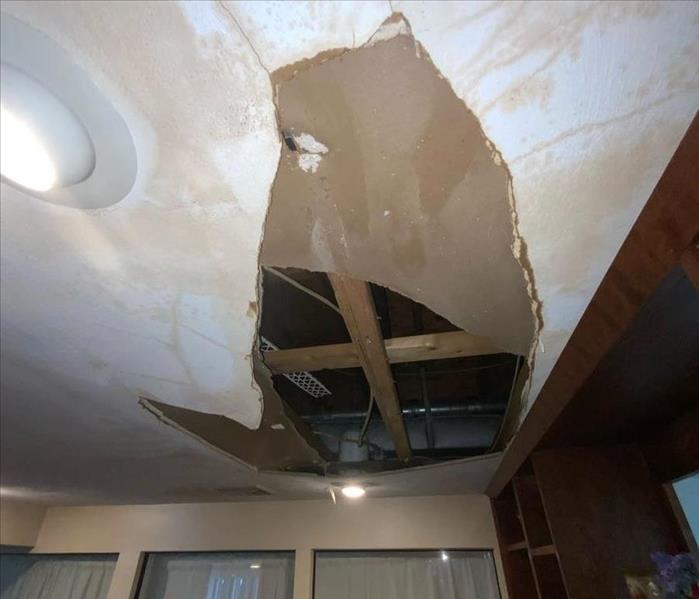Understanding the Hidden Threat: Drywall as a Breeding Ground for Mold After Water Loss Events
6/11/2024 (Permalink)
 While drywall may seem innocuous, its susceptibility to mold growth underscores the hidden threat posed by water intrusion.
While drywall may seem innocuous, its susceptibility to mold growth underscores the hidden threat posed by water intrusion.
When water infiltrates our homes, the visible damage often steals the spotlight. However, lurking behind the scenes, a silent menace may be taking hold: mold. Among the various surfaces within our homes, drywall stands out as a particularly susceptible breeding ground for mold after water loss events. Understanding this threat is crucial for effective mitigation and safeguarding the health of our living spaces.
The Perfect Habitat
Drywall, commonly used in construction for its affordability and versatility, is composed of porous materials that readily absorb moisture. This inherent porous nature makes drywall an ideal habitat for mold growth, especially in the aftermath of water intrusion. When water saturates drywall, it seeps into its porous structure, creating a damp environment conducive to mold proliferation.
Rapid Colonization
Mold spores, present in the air and ubiquitous in our surroundings, require moisture to germinate and thrive. Once water saturates drywall, these dormant spores spring into action, quickly colonizing the moist environment. Within as little as 24 to 48 hours, mold can begin to spread across the surface of damp drywall, forming visible patches and releasing airborne spores into the surrounding area.
Health Hazards
Beyond the structural damage it inflicts, mold poses significant health risks to occupants of affected spaces. Mold spores, when inhaled or come into contact with skin, can trigger allergic reactions, respiratory issues, and exacerbate existing health conditions. Certain mold species, such as Stachybotrys chartarum (commonly known as black mold), produce mycotoxins that can pose severe health risks, particularly to vulnerable individuals.
Mitigation Strategies
Addressing mold growth in drywall requires a multifaceted approach aimed at both moisture control and remediation. Swift action is paramount to prevent further proliferation and mitigate potential health hazards. Here are some key strategies:
Prompt Water Extraction: Immediately address any water intrusion or leaks to minimize moisture saturation in drywall.
Thorough Drying: Utilize professional-grade drying equipment to thoroughly dry affected drywall and prevent lingering moisture.
Mold Remediation: Engage certified professionals to conduct comprehensive mold remediation, including removal of affected drywall, thorough cleaning of surfaces, and application of mold inhibitors.
Moisture Prevention: Implement measures to control indoor humidity levels and prevent future water intrusion through proper ventilation, insulation, and maintenance of plumbing fixtures.
Vigilance and Education
In the battle against mold, vigilance and education are our most potent weapons. Homeowners and property managers must remain vigilant for signs of water damage and mold growth, especially in areas prone to moisture accumulation, such as basements, bathrooms, and kitchens. Furthermore, educating oneself about the risks of mold and the importance of proactive mitigation can empower individuals to safeguard their homes and prioritize their well-being.
In conclusion, while drywall may seem innocuous, its susceptibility to mold growth underscores the hidden threat posed by water intrusion. By understanding the dynamics of mold proliferation in drywall and adopting proactive mitigation strategies, we can protect our homes, preserve our health, and ensure a safe and healthy living environment for generations to come.





 24/7 Emergency Service
24/7 Emergency Service